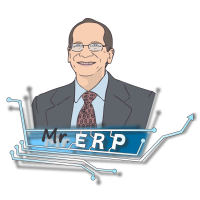
Mr. Who? Becoming Mr. ERP: Part II
During my involvement with Columbia University’s ERP system implementation and management, I recognized, even then, that accounting encompassed more than just cutting a couple of checks and doing bookkeeping. It starts digging down into all the of the operations of an organization: how can you automate, how can you integrate, how can you tie-in all the different areas. For the university, this meant integrating student records and student payments with government grants and contracts and accounting information and budgeting information and it all has to come together. Nothing in a business happens in a vacuum, and each bit of business impacts on every other bit of it.
So realizing that accounting applies everywhere to all organizations, I decided to branch out, working to implement accounting systems. Overtime, these systems grew into larger systems with greater capabilities, and I learned that organizations can get much more from software if they take advantage of its full capabilities. If companies are willing to make an initial investment in software – any software – they should also be willing to make the investment to maximize the gains software provides.
The ERP field has changed tremendously over the last 30 years, and that’s not just because the technology has changed, but because people have started to recognize the full power of the technology. And this new tech-savvy quality has provided incentive and motivation for other companies to then start doing the same.
There are many stories of companies who have achieved great success through software and hardware capabilities and through understanding technology and what it could do for them. Look at Wal-Mart as perhaps the largest and best known example. That company has been driving a lot of change in technology because they continually assess their operational procedures. In their quest for a more efficient supply chain they pushed the development of radio-frequency identification (RFID) tags, giving Wal-Mart (and eventually others) the ability to quickly track anything through a radio-wave-emitting tag and a nearby reader.
Without a large enough company able to spend that kind of money to develop the technology in the first place, RFID would not have existed, let alone become an industry standard. These investments can also be observed with numerous other technological developments, all thanks to larger companies able to invest large resources to make them happen.


